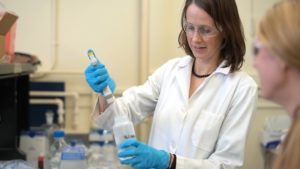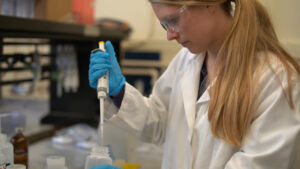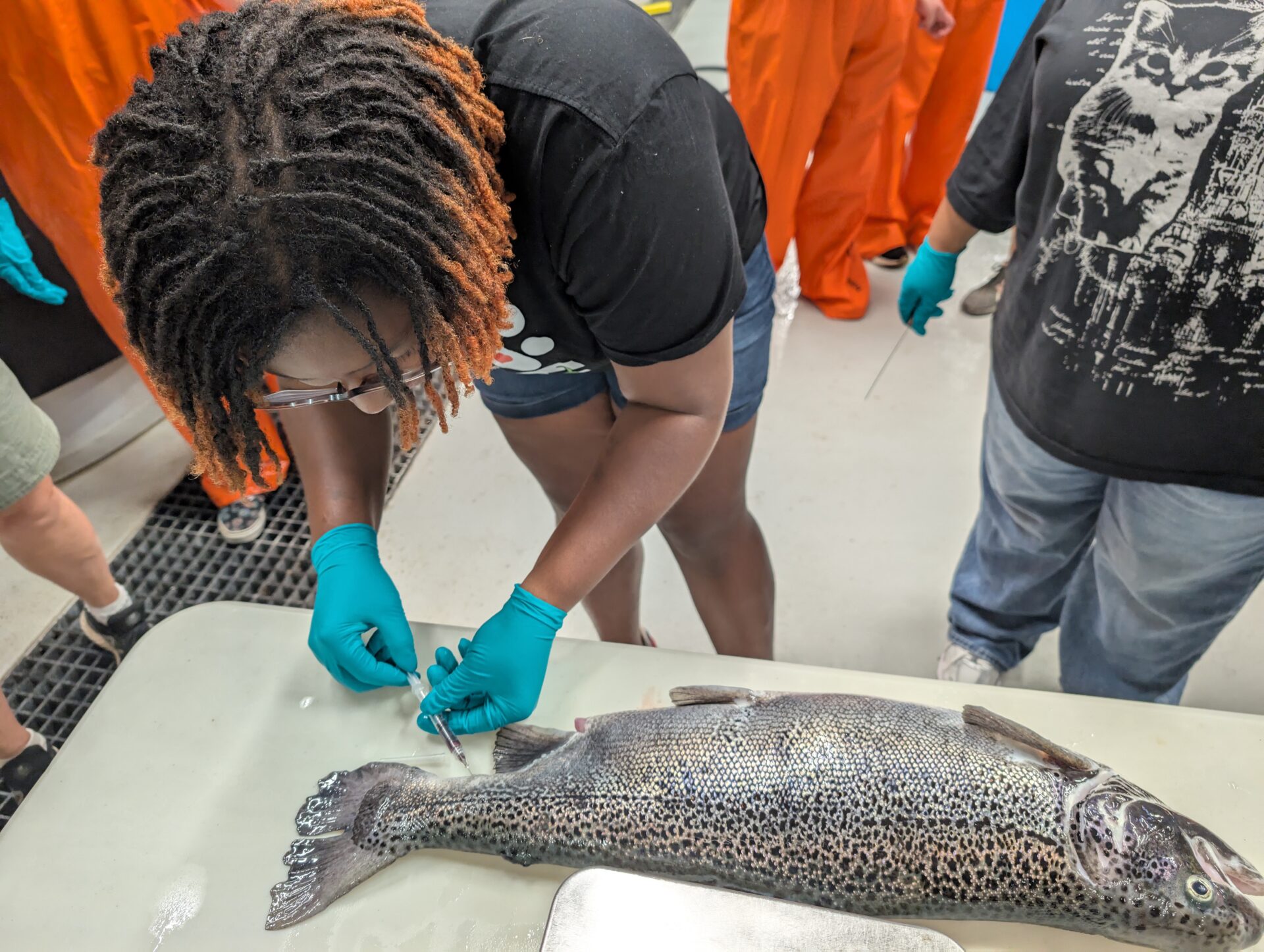The world’s largest source of fresh water, the Great Lakes, provides drinking water to more than 40 million people in the U.S. and Canada. In the first study of its kind, researchers at the University of Wisconsin-Madison College of Engineering have demonstrated that tributary rivers feeding Lake Michigan play an important role in bringing the human-made group of chemicals known as per- and polyfluoroalkyl substances (PFAS) to the Great Lakes system.

Researcher Christy Remucal in her lab on the University of Wisconsin-Madison campus is analyzing water samples taken from known contamination sites, the Menominee and Peshtigo rivers, which feed into Lake Michigan. Photo: Bonnie Willison
Christy Remucal with the Department of Civil and Environmental Engineering, and postdoctoral co-investigator Sarah Balgooyen quantified 10 PFAS chemicals known as perfluoroalkyl acids (PFAAs), in the water and sediment of 41 tributaries to Green Bay of Lake Michigan.
The study is published in the Feb. 10, 2022, edition of the ACS ES&T Water Journal (https://pubs.acs.org/doi/full/10.1021/acsestwater.1c00348). It was funded by a grant from the Wisconsin Sea Grant College Program.
“Tributary PFAS loading to the Great Lakes is poorly understood,” Remucal said. “The role of sediments as a PFAS source or sink is also largely unknown. Our study is bringing some much-needed answers to not only the people who live around the bay of Green Bay, but also to all of the Great Lakes communities because it’s an interconnected water system. These findings could also be extrapolated to understand the conditions surrounding thousands of other tributaries that flow into the five lakes.”
PFAAs are found in common household items like cookware, cleaning agents and fabric treated with repellants, as well as in firefighting foams. In the study area, the Fox, Menominee and Peshtigo rivers contribute two-thirds of the total tributary PFAA loading to Green Bay despite their relatively low concentrations and despite the current regulatory focus on sites with high PFAA concentrations. The sources of the chemicals in the study tributaries are likely linked to a firefighting foam manufacturer, other industrial activity and airports, which use firefighting foam on runways.
In addition to the tributary discharge, the work showed that tributary sediments can contribute to PFAA via a releasing process known as desorption. Contaminated riverbed sediments may act as a PFAA source even if water concentrations are reduced by pollution mitigation.

Sarah Balgooyen, a postdoctoral investigator of PFAS, said there are likely more than 5,000 compounds known as per- and polyfluoroalkyl substances. In research published today in a leading journal Balgooyen quantifies 10 of the chemicals analyzed in the water and sediment of Lake Michigan tributary water bodies. Photo: Bonnie Willison
“Understandably, there is a heightened interest in the levels of PFAS in drinking water. PFAS have been linked to a number of ill human health effects, including cancer,” Balgooyen said. “I’m grateful for the opportunity to share my research. It certainly leads to a clearer understanding and, hopefully, can provide some guidance on contamination cleanup.”
The research will also inform the Wisconsin PFAS Action Council, of which Remucal is a member as the University of Wisconsin System representative. She is joined by representatives from 17 state agencies. The group has identified eight PFAS priority themes, including one on sampling and one on research and knowledge.
A video about this project can be found here.
A recorded talk about PFAS can be found here.





